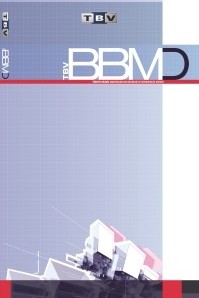FORMAL MODEL OF ADJECTIVE IN THE KAZAKH LANGUAGE
FORMAL MODEL OF ADJECTIVE IN THE KAZAKH LANGUAGE
___
- [1] EİFRİNG H., THEİL R. (online), Linguistics for Students of Asian and African Languages. Available at: http://www.uio.no/studier/ emner/hf/ikos/EXFAC03- AAS/h05/larestoff/linguistics/ (accessed 19/08/2014)
- [2] KAZAKH GRAMMAR. Phonetics, word formation, morphology, syntax, Astana, 2002. In Kazakh.
- [3] BATAYEVA Z., Colloquial Kazakh, Routledge, 2012.
- [4] GRUBER, T.R., Toward Principles for the Design Of Ontologies Used for Knowledge Sharing, International Journal HumanComputer Studies, 1995, Vol. 43, Issues 5-6, p. 907-928.
- [5] KHAKHALİN, G., Applied Ontology in the language of hypergraphs, Proceedings of IInd All–Russian Conference ―Knowledge - Ontology - Theory‖ (KONT-09), 2009, p. 223- 231. In Russian.
- [6] RUİTİNG LİAN, BEN GOERTZEL, SHUJİNG KE, JADE O’NEİLL, KEYVAN SADEGHİ, SİMON SHİU, DİNGJİE WANG, OLİVER WATKİNS, GİNO YU, SyntaxSemantic Mapping for General Intelligence: Language Comprehension as Hypergraph Homomorphism, Language Generation as Constraint Satisfaction, Artificial General Intelligence. Lecture Notes in Computer Science , 2012,Volume 7716, p. 158-167.
- [7] ZHEN, L., JİANG, Z., Hy-SN: Hyper-graph based semantic network, Knowledge-Based Systems, 2010, Vol 23, Issue 8, p. 809-816.
- [8] BRETTO A., Hypergraph Theory, Springer International Publishing Switzerland, 2013. [9] BERGE, C.C., Graphs and Hypergraphs, Elsevier Science Ltd., 1985.
- [10] BANU YERGESH, ASSEL MUKANOVA, ALTYNBEK SHARİPBAY, GULMİRA BEKMANOVA, AND BİBİGUL RAZAKHOVA, Semantic Hyper-graph Based Representation of Nouns in the Kazakh Language. Computación y Sistemas Vol. 18, No. 3, 2014 pp. 627– 635, ISSN 1405-5546, DOI: 10.13053/CyS-18-3-2041
- [11] PROTÉGÉ. Available at: http://protege.stanford.edu (accessed 19/08/2014) [12] POTCHİNSKII I., Formal representation of semantic hypergraphs and their operations,
- 2012. Available at: http://rgupenza.ru/mni/content/files/2012_Pochinskii.pd f
- [13] SHARİPBAEV A.A. , BEKMANOVA G.T., BURİBAYEVA A.K., YERGESH B.Z., MUKANOVA A.S., KALİYEV A.K., Semantic neural network model of morphological rules of the agglutinative languages, 6th International Conference on Soft Computing and Intelligent Systems, and 13th International Symposium on Advanced Intelligence Systems, SCIS/ISIS, 2012, p. 1094-1099.
- ISSN: 1305-8991
- Başlangıç: 2005
- Yayıncı: Türkiye Bilişim Vakfı
SEMANTIC ANNOTATION OF TATAR VERBS FOR LINGUISTIC APPLICATIONS
Alfiia Galieva, Ayrat Gatiatullin, Olga Nevzorova, Dilyara Yakubova
TOWARDS AUTOMATIC SPEECH RECOGNITION FOR THE TATAR LANGUAGE
A.f. KHUSAİNOV, Dz. Sh. SULEYMANOV
FORMAL MODEL OF ADJECTIVE IN THE KAZAKH LANGUAGE
A. Mukanova, B. Yergesh, A. Sharipbay, G. Bekmanova
A Mobile Assistant for Turkish
Gökhan Çelikkaya, Gülşen Eryiğit
CUSTOMER SATISFACTION MEASUREMENT TOOL BY ANALYSING TURKISH PRODUCT REVIEWS
- Zeynep, - Orhan, - SÜLEYMAN, Fatih Giriş, Migena Ceyhan, Elton Domnori
The Impact of NLP on Turkish Sentiment Analysis
Ezgi Yıldırım, Fatih Samet Çetin, Gülşen Eryiğit, Tanel Temel
ITU Validation Set for Metu-Sabancı Turkish Treebank
TURKISH TEXT ANALYSIS SYSTEM FOR AUTOMATIC DETECTION OF PSYCHIATRIC DISORDERS
